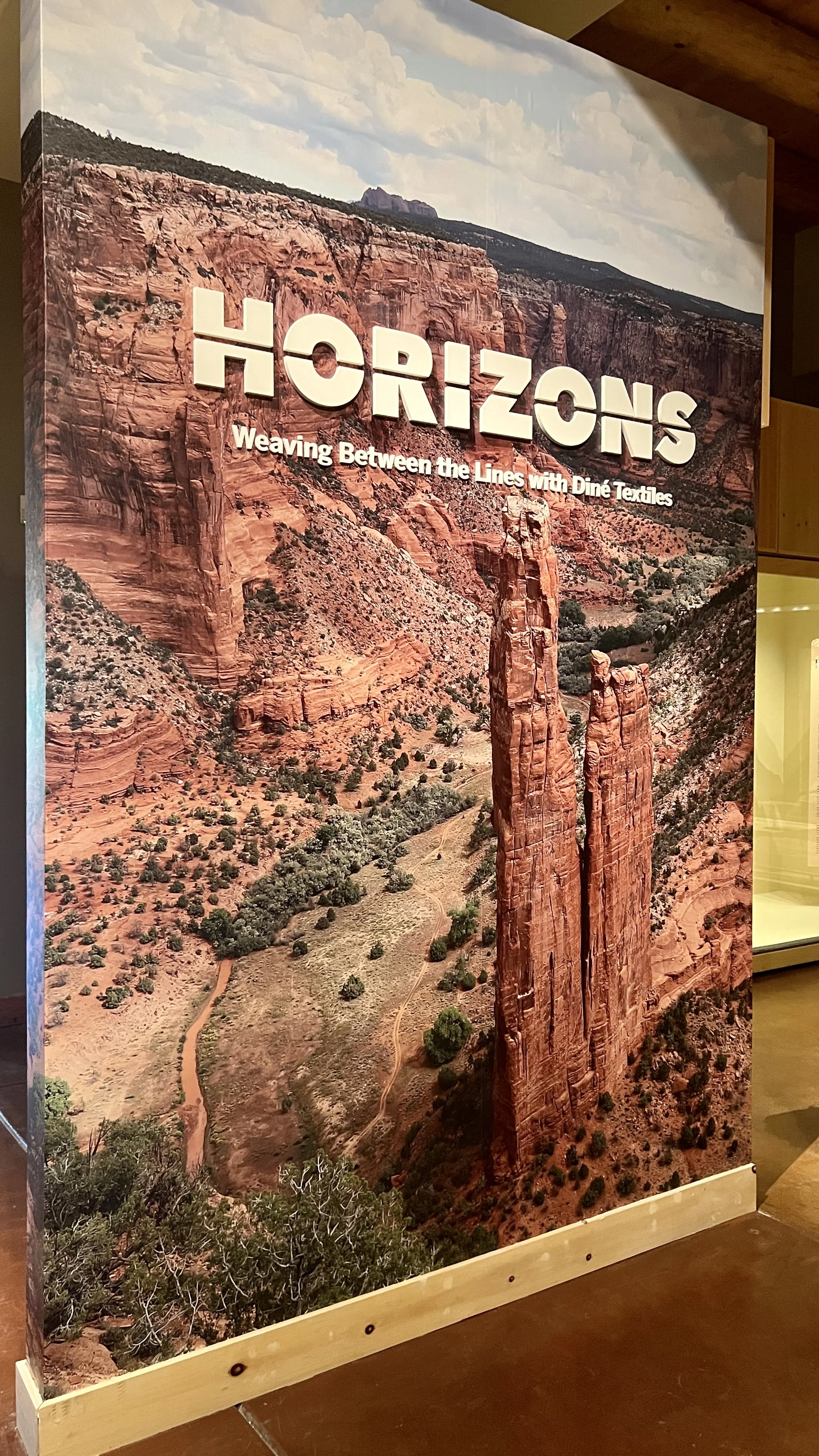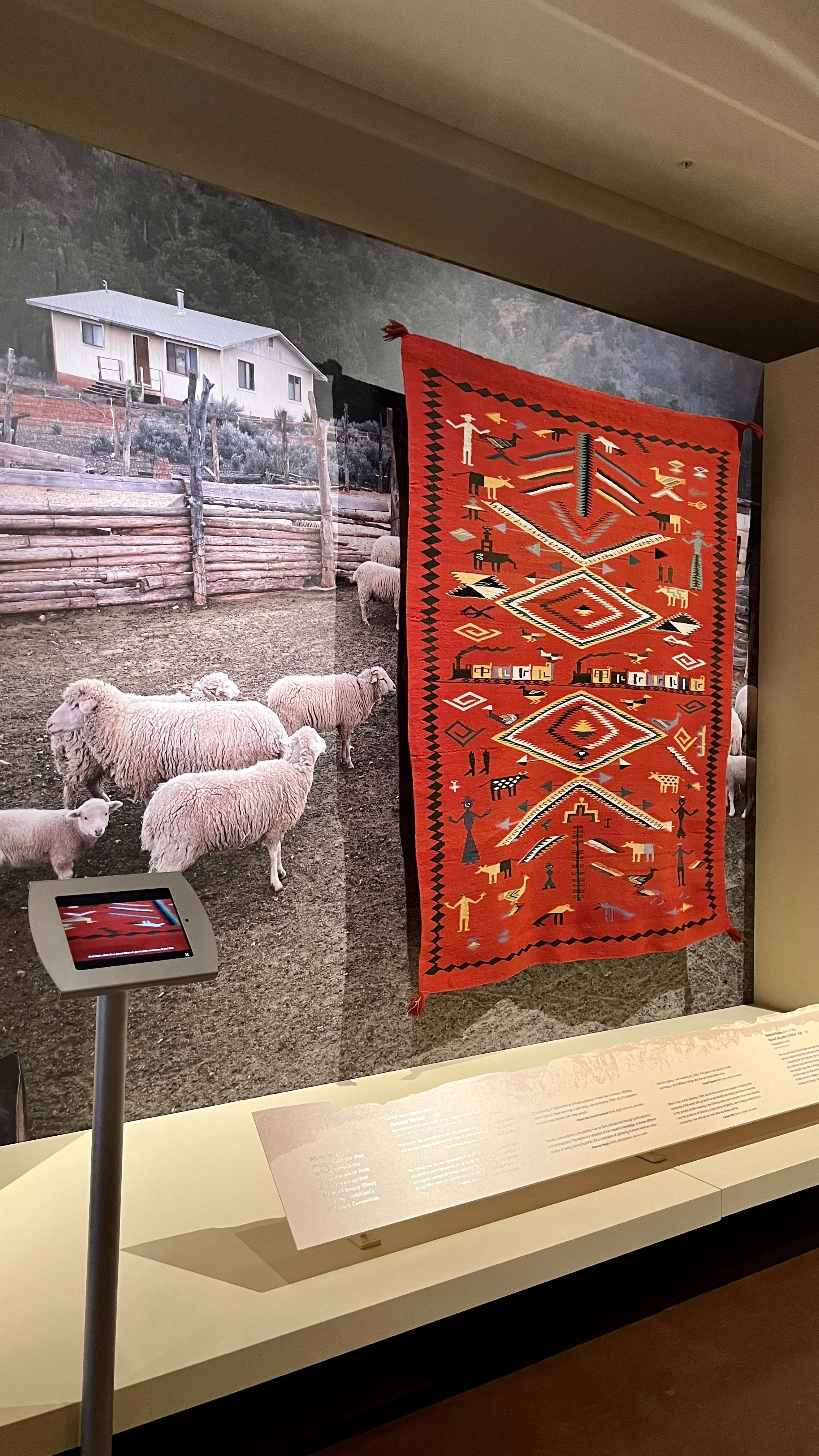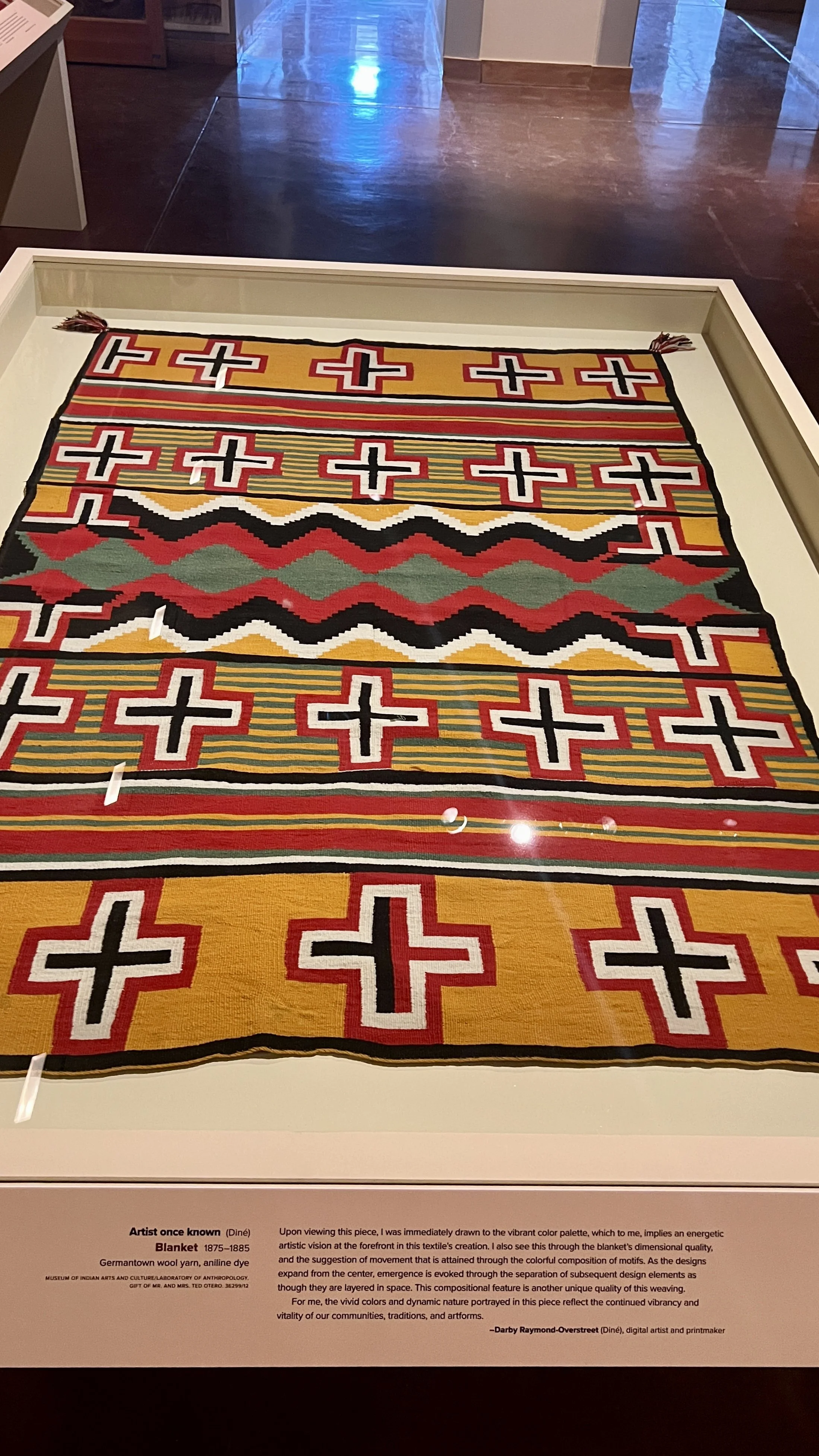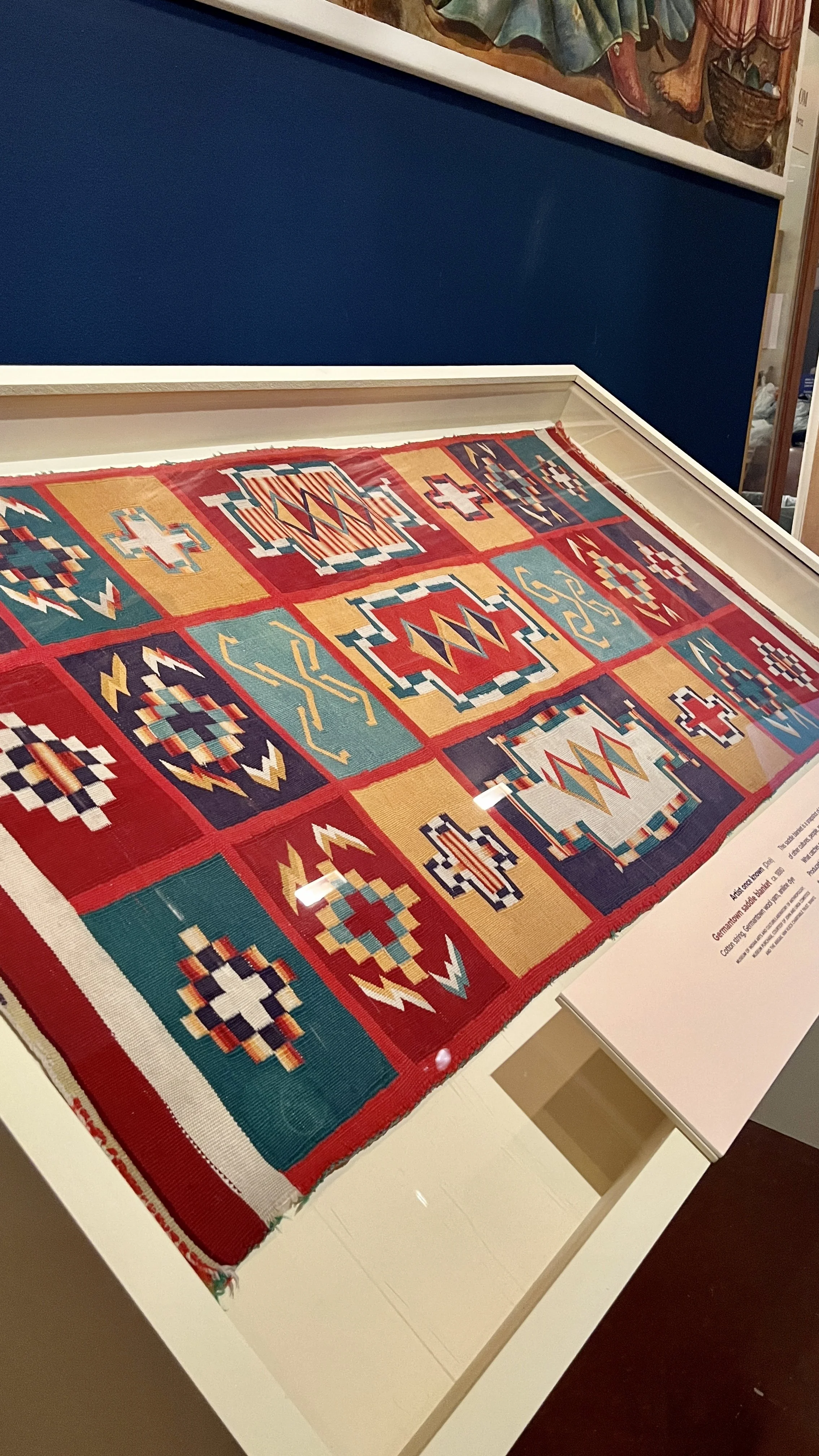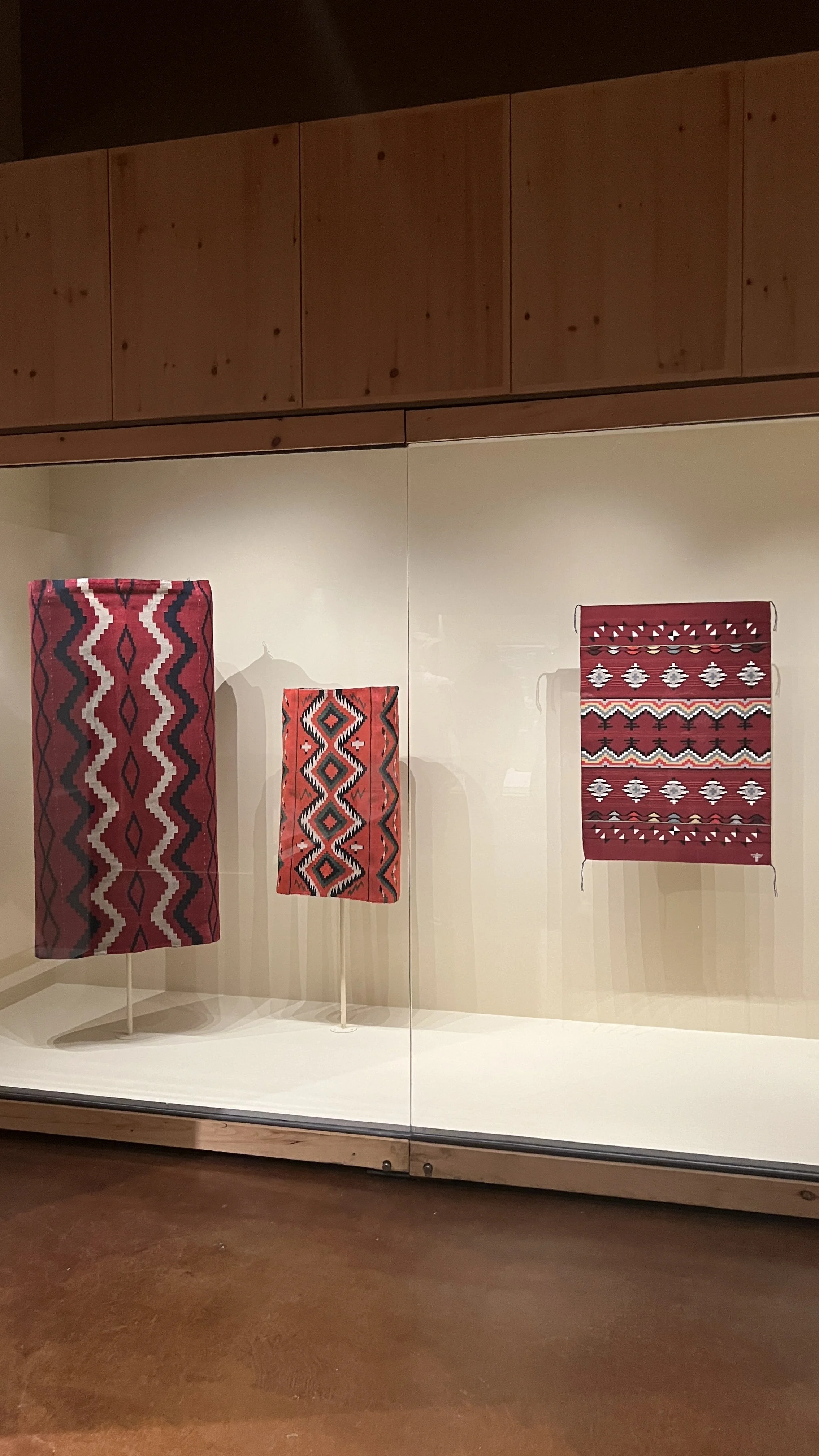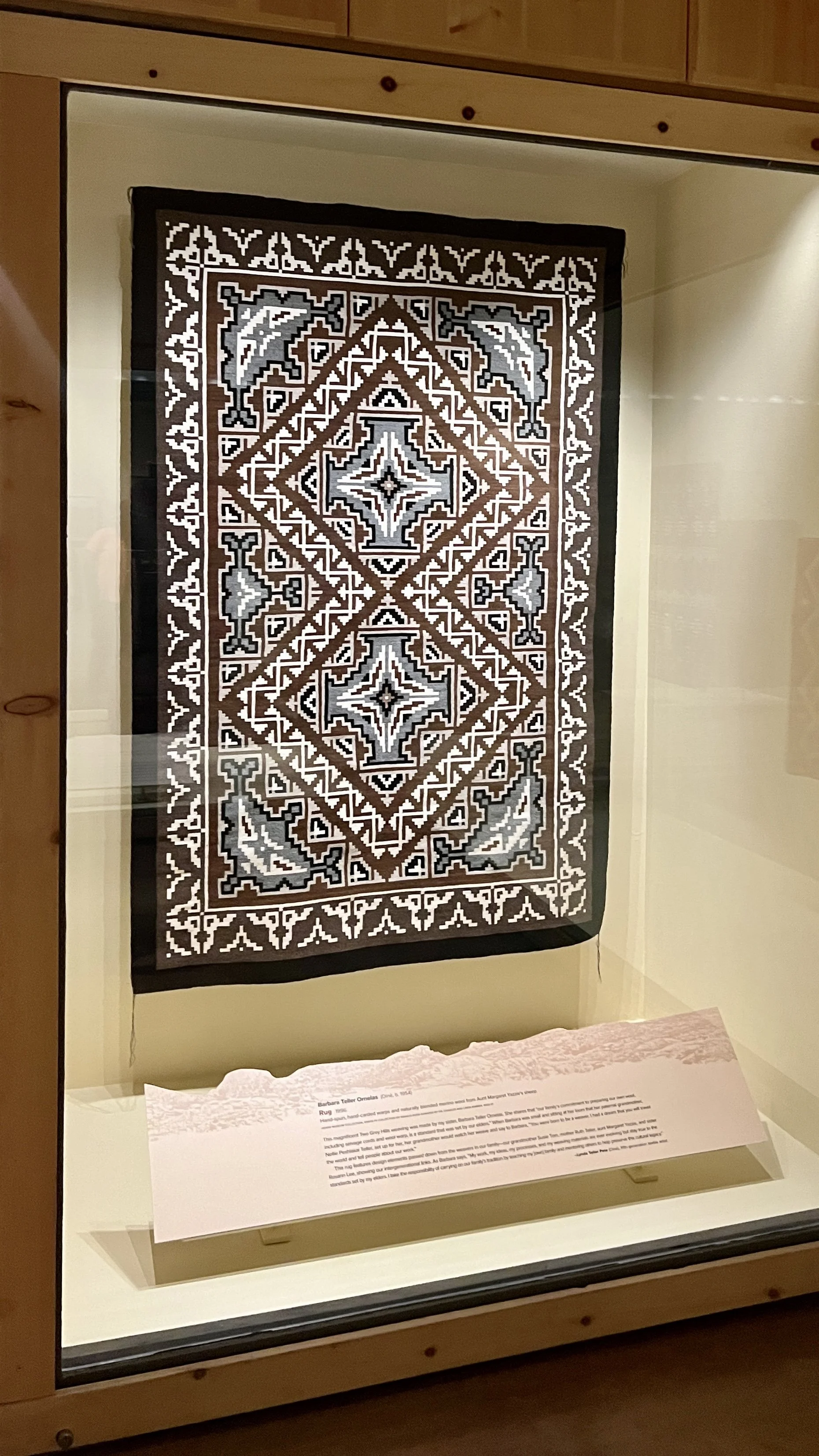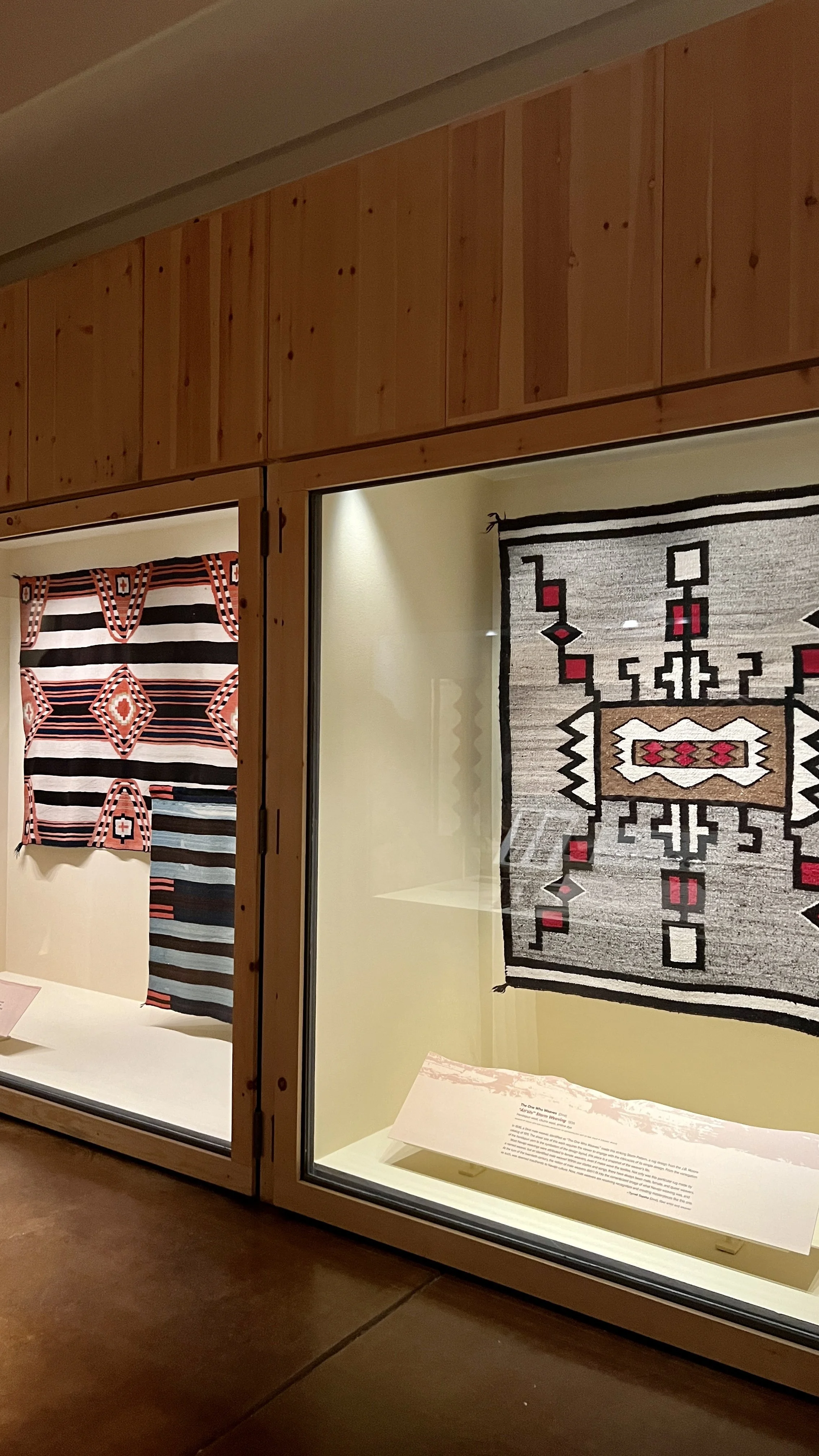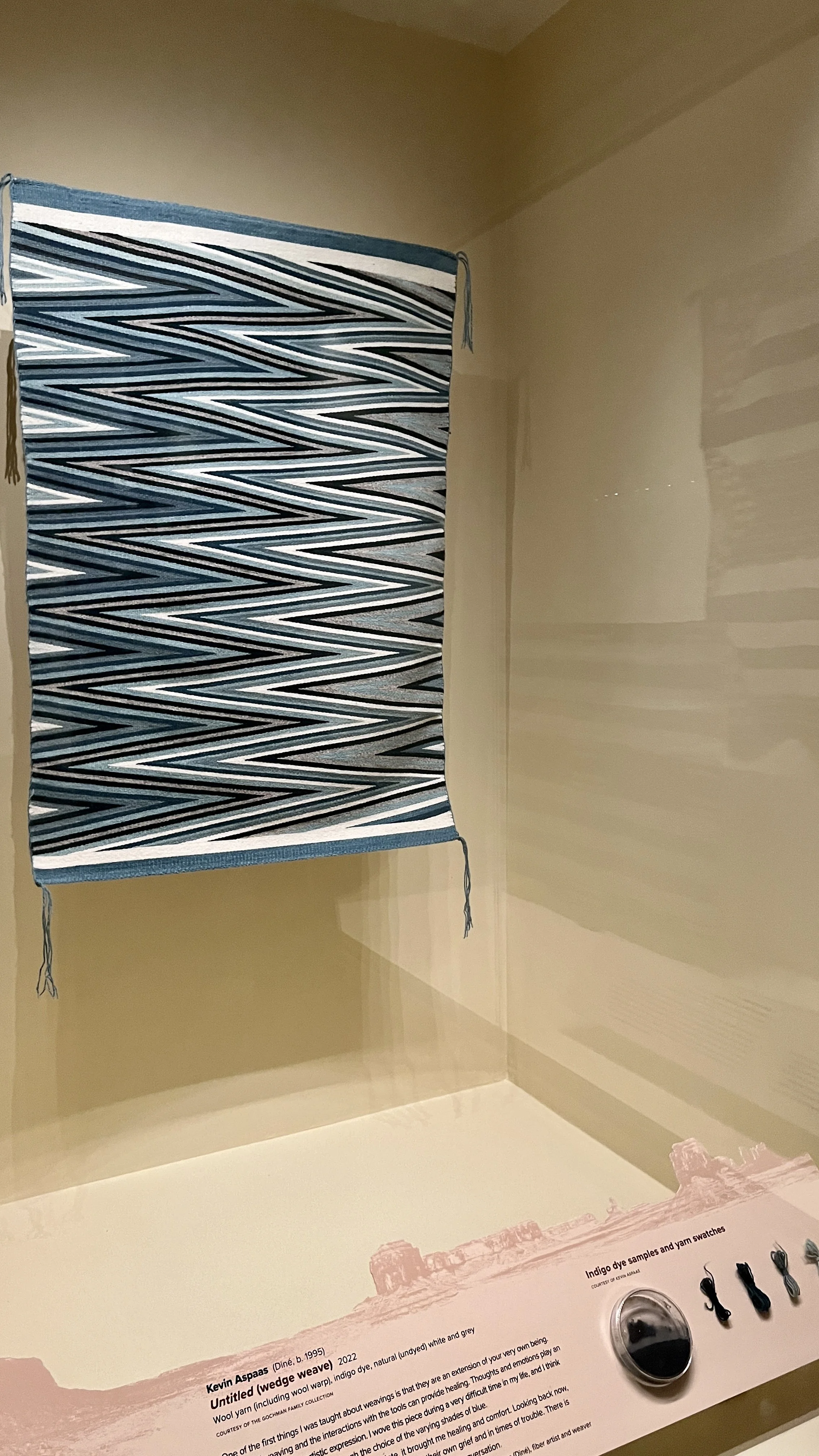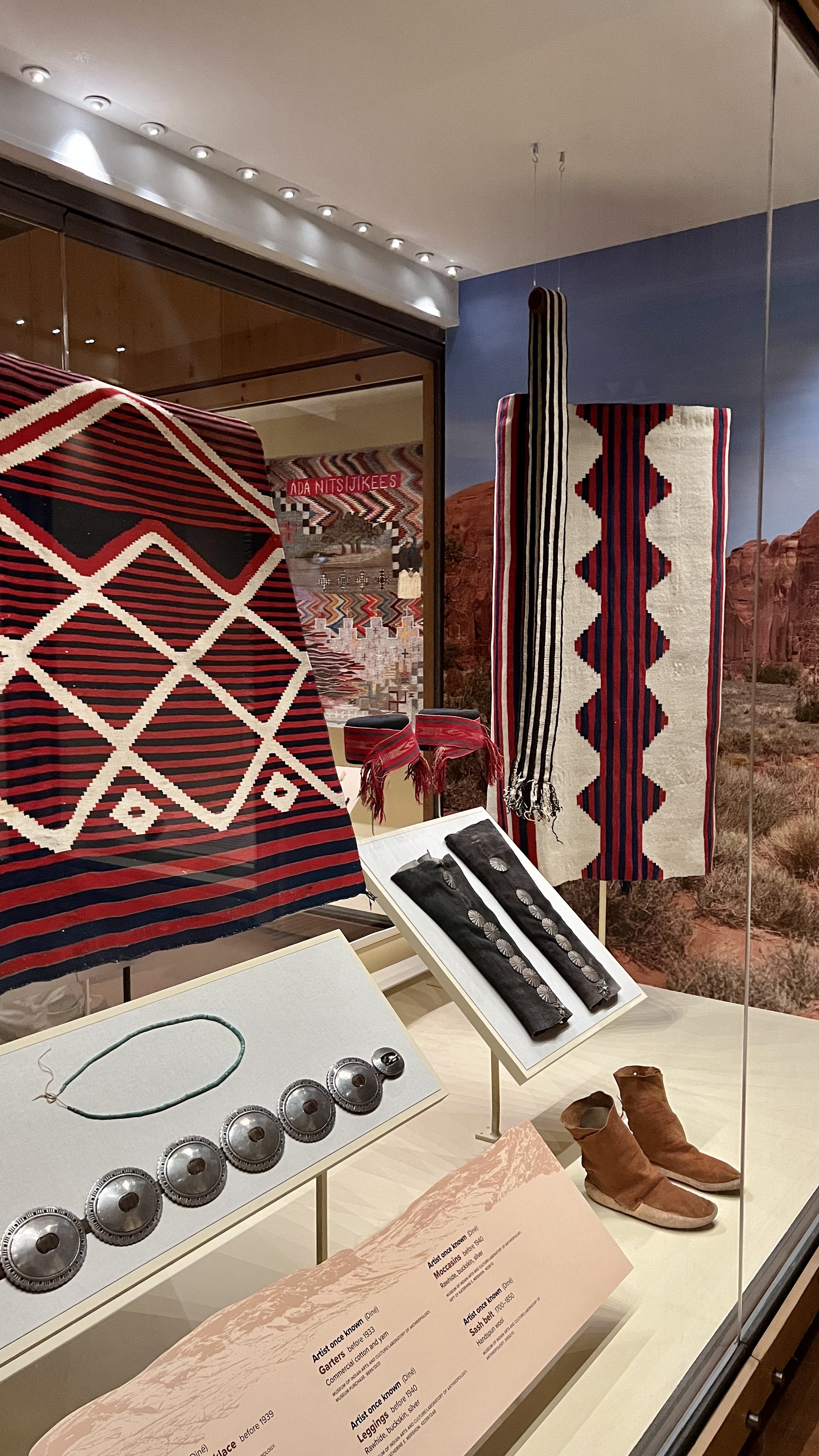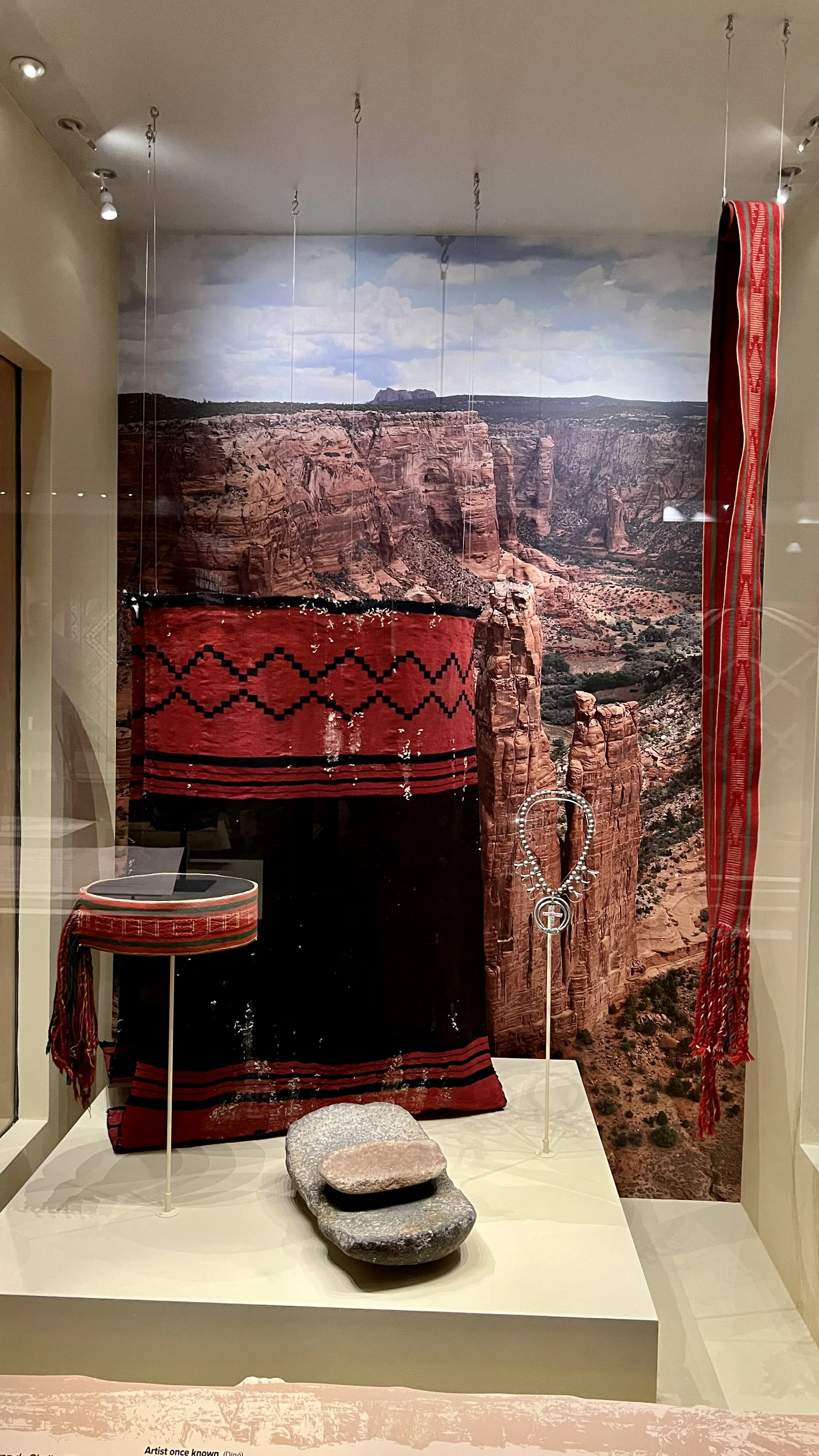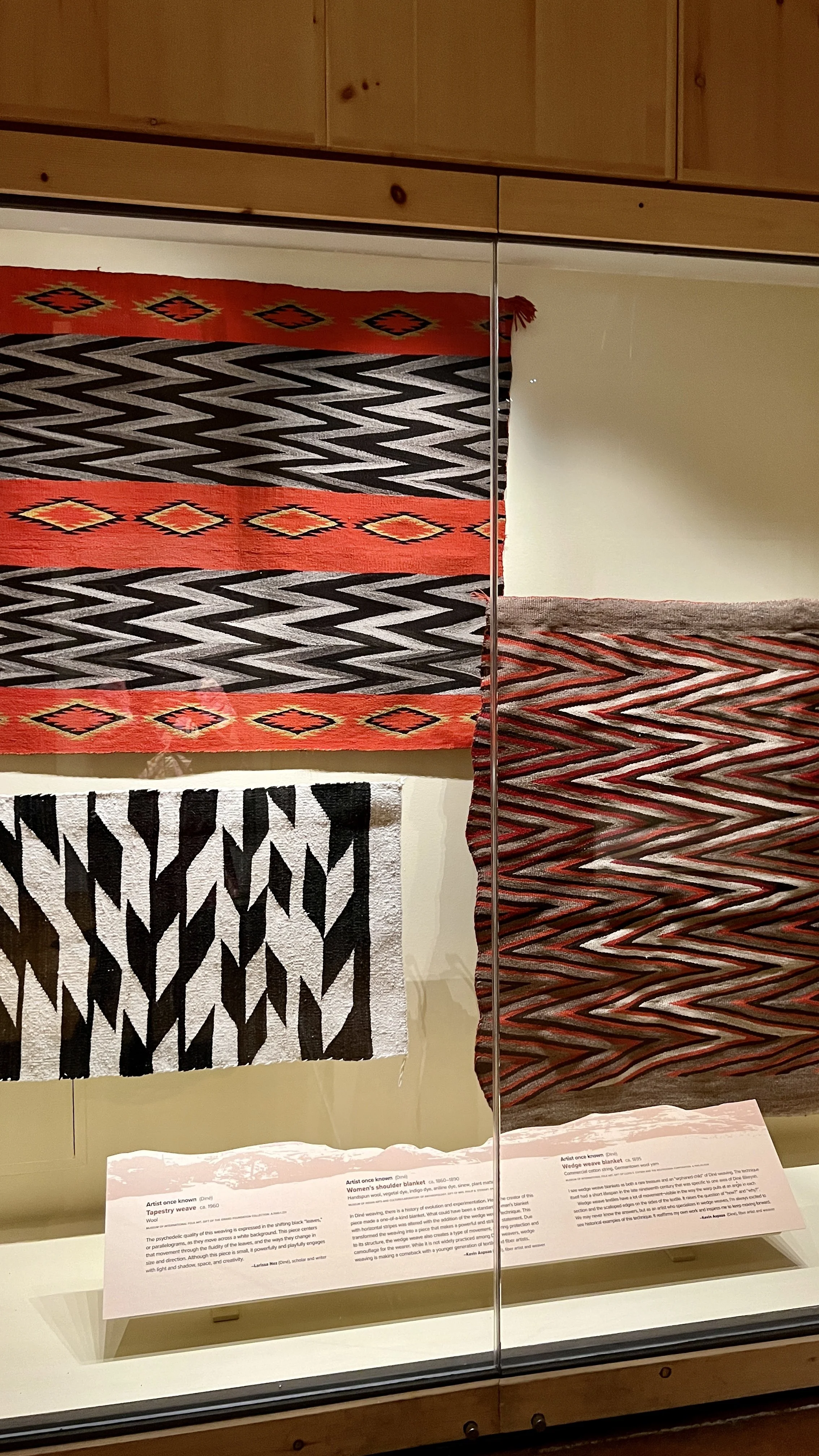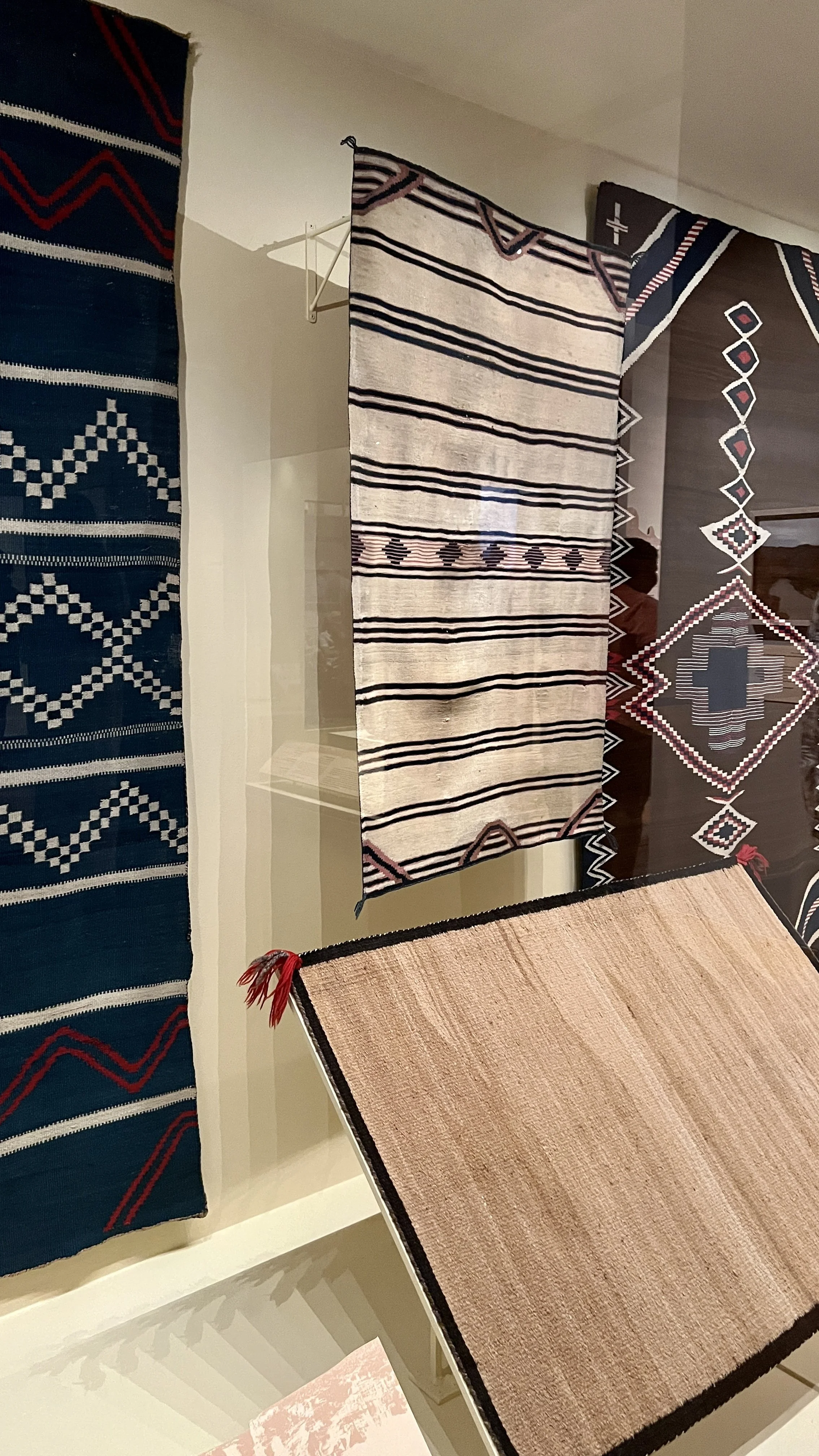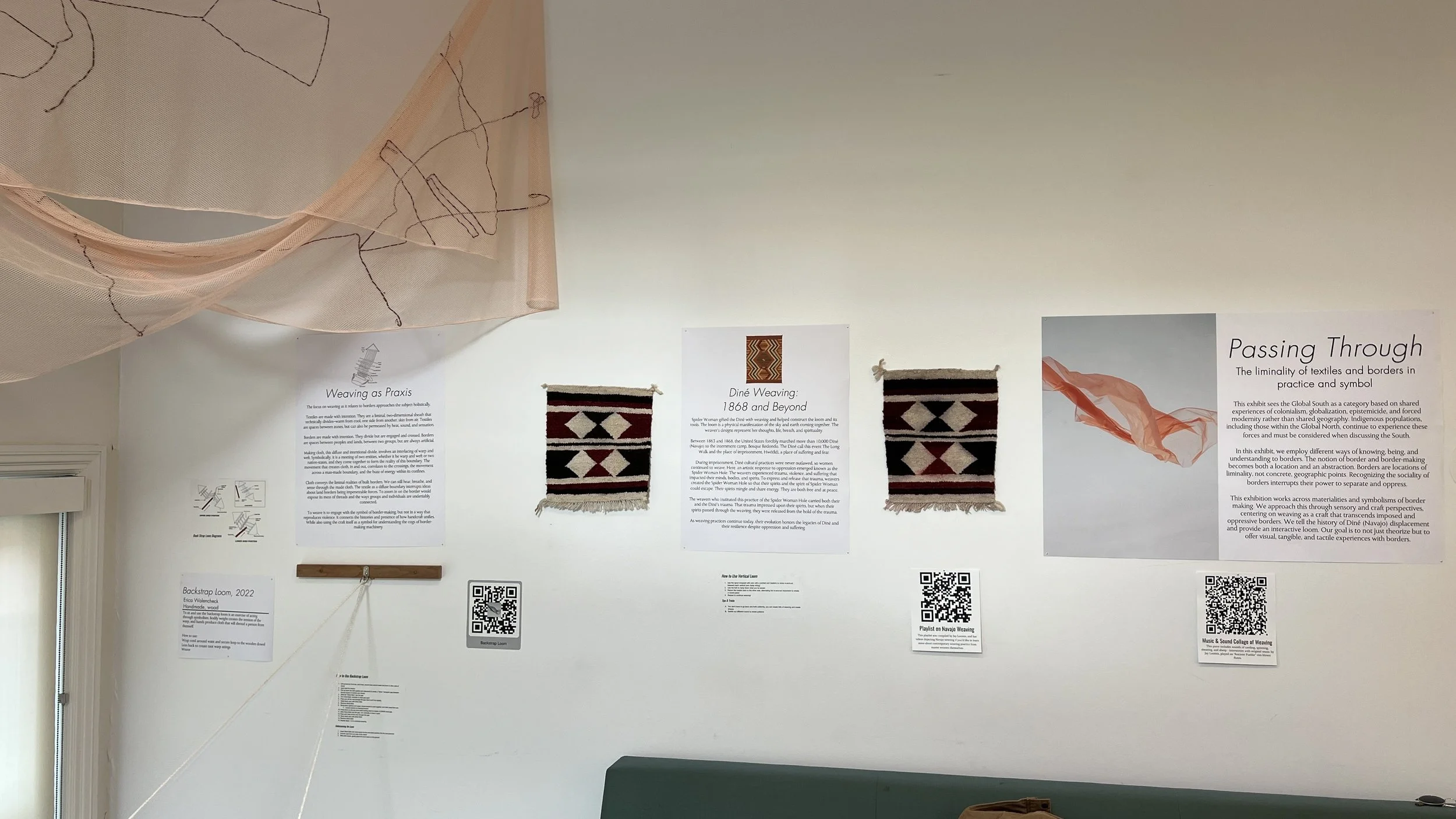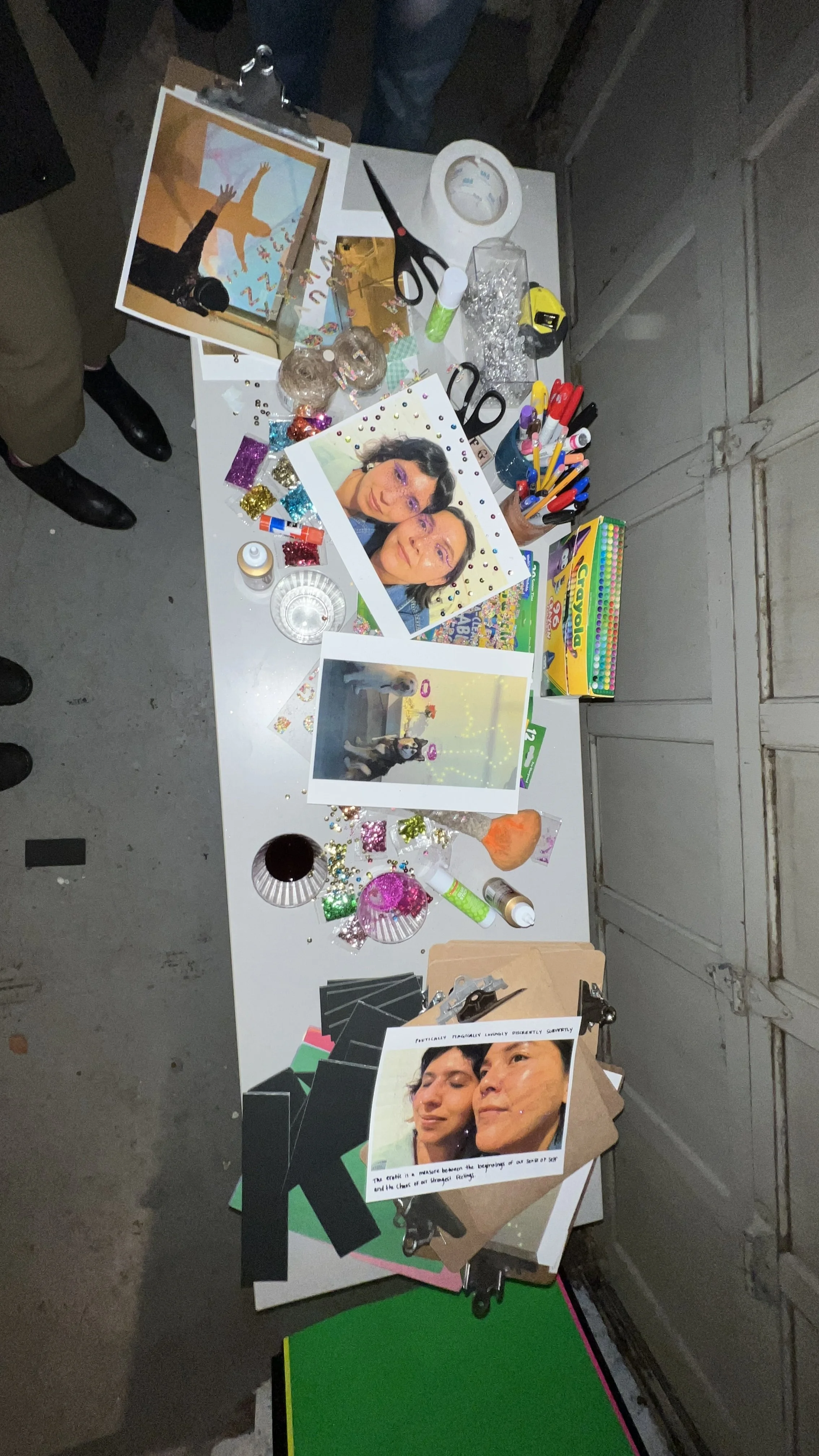Horizons: Weaving Between the Lines
Museum of Indian Arts and Culture, Santa Fe, NM, July 16, 2023 - February 2, 2025
“The horizon line is both a point of connection between sky and earth and a separation of space. Horizons: Weaving Between the Lines with Diné Textiles at Museum of Indian Arts & Culture (MIAC) explores the connections between weaving and photography as modes of engagement with place. By situating these two media in conversation, this exhibition presents each as a way of seeing and knowing Dinétah, the Navajo homeland, emphasizing the land-based and relational practices of Diné (Navajo) weaving.”
Horizons: Weaving Between the Lines with Diné Textiles showcases more than 30 textiles and related items from the extensive collection at MIAC. Historical and contemporary weavings will be displayed alongside materials, tools, digital prints, photographs, and other immersive media. Through the exhibition and its accompanying publication from the Museum of New Mexico Press, Horizons strives to advance new interpretive frameworks that specifically work with, and towards, decolonial and community-oriented methodologies. Co-curators Dr. Hadley Jensen and Rapheal Begay (Diné) are working in collaboration with an Advisory Committee of five Diné artists, educators, and scholars, including Lynda Teller Pete, Kevin Aspaas, Larissa Nez, Tyrrell Tapaha, and Darby Raymond-Overstreet.
Decolonial Matter
Cogut Institute for the Humanities, Brown University, Providence, RI, April 21, 2022 - May 12, 2022
“This exhibition [“Passing Through: The liminality of textiles and borders in practice and symbol”], uses the Global South as a conceptual category based on shared experiences and histories of colonialism, globalization, epistemicide, and forced modernity rather than shared geography (Kloss 2017; Levander & Mignolo 2011)…This exhibition works across the materialities and symbolisms of border making. We approach this subject through sensory and craft perspectives, centering on weaving as a craft that has transcended imposed and oppressive borders, particularly focusing on histories of Diné (Navajo) displacement, and the abstraction of understanding the processes of border making through weaving.”
Decolonial Matter showcases projects by graduate students in the collaborative humanities seminar “Decolonial Matters: Thinking from the South” led by Yannis Hamilakis and Vazira Zamindar.
erotic vision: poetics of body and image
JNBC, Brown University, Providence, RI, February 3, 2021 - March 9, 2022
“We will explore Audre Lorde’s Uses of the Erotic: The Erotic as Power in an intimate poetry and photography workshop where our collective creations will become the exhibition. We will be utilizing Lordean Erotics as a theme for an exhibition and 2 session workshop. The exhibition will be made up of zine collections, multimedia ephemera, and photography and poetry of participants in the workshops. Participants will create photographic collages and poetry to put up in the exhibition and the lab will offer a space to interact with the capaciousness of the erotic, the archive, and communal creation.”
Color Riot!: How Color Changed Navajo Textiles
Montclair Art Museum, Montclair, NJ, September 18, 2021 - January 2, 2022
As a 2021 ArtTable Fellow, Larissa was selected to partner with the Montclair Art Museum to curate a unique room within the traveling exhibition Color Riot!: How Color Changed Navajo Textiles. Alongside, Laura Allen, the Curator of Native American Art at the Montclair Art Museum, Larissa curated the space called, The Legacy of Spider Woman / Na’ashjéii Asdzáán Baahane’. This room featured Diné archival and material culture from the museum’s collection as well as items that were donated from Patricia and Lawrence Johnson, Larissa’s grandparents. This room also privileged the words, experiences, and perspectives of Diné weavers, community members, and cultural experts.
Color Riot! was organized by the Heard Museum in Phoenix, Arizona in 2019. The three original curators of Color Riot! are Diné women and their work was honored and continued by Larissa as a 2021 ArtTable Fellow. Between 2019 and 2022, the exhibition traveled to three different cities across the nation with its last stop being in Montclair, NJ.
“Weaving” by Connor Chee was featured in The Legacy of Spiderwoman and was played on a continuous loop throughout the exhibition period. The curatorial choice to include a contemporary Diné musician was meant to highlight the distinct relationship between Diné music and weaving. “Weaving” could be heard throughout the entire main galleries of Color Riot!, affirming the fact that Diné music, traditional and contemporary alike, spiritually nourish the Diné weavings on display, the weaving tools in the case, and the Diné artists, curators, and community members who were part of making Color Riot! come to life.
Weetamoo Woods: More Than A Name
Methods in Public Humanities, Brown University and Rhode Island School of Design, Fall 2020
In the Fall 2020 semester, public humanities graduate students from Brown University and design students from RISD collaborated to design exhibition projects as curators and exhibition designers for the AMST2540: Methods in Public Humanities course. The “Methods” class, hosted by the John Nicholas Brown Center for Public Humanities and Cultural Heritage, is a required course for public humanities students and has, over the years, covered many topics, from museum work to community arts engagement to nonprofit management. In fall 2020, the focus was on exhibitions.
“Curators Felicia Bartley and Larissa Nez and designer Alice Cole developed a plan for a memorial and museum for the seventeenth-century Pocasset woman sachem, or tribal leader, Weetamoo, set in the Weetamoo Woods park in Tiverton, Rhode Island. Exhibits in three pavilions tell her story, describe traditional Pocasset ecological knowledge, and display artwork by contemporary Native artists that “challenge audiences to recognize the struggles, reality, and beauty of their existence. They write: ‘Her life and death speak to the complexities of erased and silenced histories of Native women. This exhibition pays tribute not only to Weetamoo, but also to seventeenth-century Wampanoag women and contemporary Native American women. Weetamoo Woods tells all of their stories: the stories of enslaved Wampanoag women, the way they used and preserved the woods, and the ongoing effects of violence against Native women.’”
Revisions: Contemporary Native Art
Snite Museum of Art, University of Notre Dame, Notre Dame, IN, February 2 – May 18, 2019
Revisions: Contemporary Native Art was the first Native contemporary art exhibition at the Snite Museum of Art. This exhibition highlighted the ways in which Native contemporary artists addressed the politics of identity & representation through their repurposing and reuse of objects, images, and texts found in tribal archives and popular culture. One of the main initiatives of this exhibition was to strengthen the museum’s relationship with the Pokagon Band of Potawatomi and Native students. To do this, France Jacobus-Parker (guest curator) and Larissa (curatorial assistant) displayed contemporary works by Potawatomi artists, hosted lectures by Potawatomi scholars, and invited the Native Student Association of Notre Dame (NASAND) to help with student programming. In this position, Larissa’s work challenged members of the University to acknowledge the damages of misrepresentation of Indigenous peoples and reminded them of the value of Indigenous student leadership.
